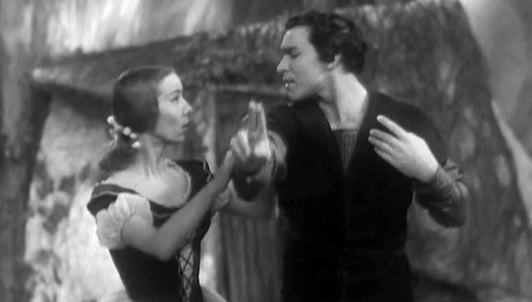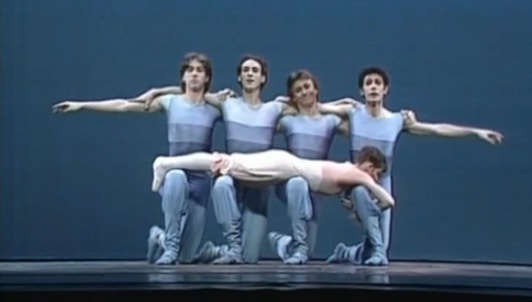This ballet is choreographer Michel Fokine's new reading of his ballet created a few years before, Chopiniana, where he pays a tribute to the old days romantic ballets. The work does not follow a logical narrative progression, as Karsavina says in the introduction, it is a "Romantic reverie." The unique male dancer (John Field in this version) embodies a Poet. The corps de ballet and the three women soloists Alice Markova, Violetta Elvin and Svetlana Beriosova are intimately linked to the Russian Ballet and to Russia as a whole.
Born in England, Alicia Markova was the youngest dancer of the Russian Ballet when she was hired in 1925, at age 14. With them, she performed in Les Sylphides and Giselle on every stage of the world. Violetta Elvin (born Prokhorova) was trained at the Bolshoi dancing school with which she performed before joining the Sadler's Wells Ballet in England in which she danced until the end of her career in 1956. Svetlana Beriosova was born in a family devoted to dance; her father was Nicholas Beriozoff, a dancer, a ballet master and a stage director who had worked in close collaboration with Fokine at the Ballet Russe in Monte Carlo at the end of the 1930s. Young Svetlana Beriosova studied with professors from Diaghilev's troop and she attended the Royal Ballet in the 1950s, where she became a much loved ballerina. Her performance of Lady Elgar in frederick Ashton's Enigma Varations in 1968 is unforgettable. The corps de ballet is one of the main element of Les Sylphides rehearsed with one of Diaghilev's dancers: Lydia Sokolova who collaborated with him for many years and received her Russian name Sokolova by Diaghilev himself, whereas she was born in England, under the name of Hilda Munnings.
These images of the Sylphides are the first of the complete ballet from the BBC archives. It has to be remembered that in the 1950s, TV images were exclusively black and white and live recordings did not exist, studios were very small and cameras were heavy and cumbersome because of their numerous valves. The special effects and images fading into one another in the Sylphides presented here appear very archaic but they are still efficient today. The actors rehearsed especially for the screen – the cameras dictated the placement of the corps de ballet and the soloists entrance. In the Sylphides for example, the dancers come and go in front of the camera which creates a feeling of intimacy with the artists that would be impossible on stage because of the orchestra pit. The name of the orchestra playing on this recording appears on no archive document but considering the credits mentioning conductor Eric Robinson, it was most likely the BBC Television Orchestra.

